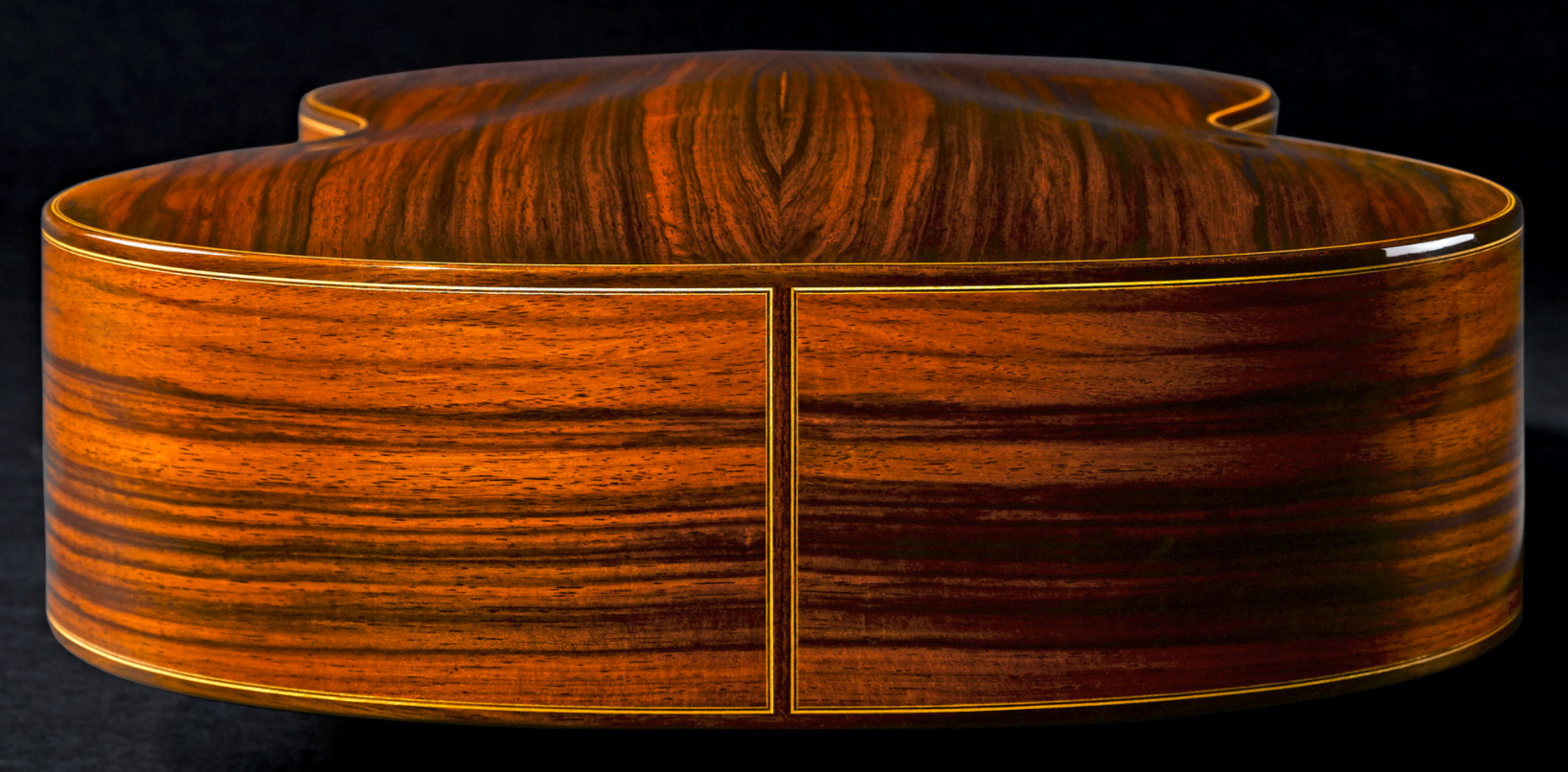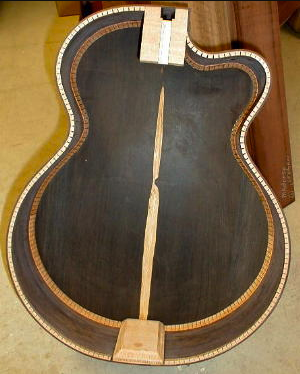Introduction
Classical guitars have been around in their present form for circa 200 years. Since that time their design has been an ongoing, constant, breathing topic. Unlike many other instruments from that time the design of classical guitars and guitars in general hasn’t stopped evolving. Many luthiers are constantly striving to improve the design by making guitars easier to play, lighter & stronger with beautiful tones and aesthetics to match.
One such design that has been gaining more ground over the past few decades is the ‘arched back classical guitar’.
Traditional Vs Arched
One of the best ways to describe the arched back of a classical guitar is to compare it to the traditional back which was for all intents and purposes – flat. The picture below shows a traditional classical guitar design with a flat back.
Pictured below is a wonderful picture clearly showing the arched back and its radically different style.
From the two pictures above it is very easy to see the aesthetic differences between the two designs. Yet perhaps the most important point to consider is the impact upon volume, comfort, and tonal difference that an arched-back designed guitar has compared to it’s flat-backed predecessors.
A little bit of history
Arched back guitars have been around for at least 4 decades and have been used quite regularly in acoustic guitar design by famous makers such as Taylor and Guild. Their use and integration into production-model guitars by such well-known and respected guitar makers is a definitive sign that the design works and has been accepted by the guitar community at large. Classical guitar makers have been a bit slower to adopt the arched back design but it is definitely gaining momentum and acceptance by luthiers around the globe.
Pros & Cons
At the heart of the matter is sound and more so the quality of sound. Many guitar makers in recent years have been striving to make classical guitars that have more projection and are louder than the guitars of yesteryear. There is a school of thought out there that believe the beautiful lively tones of Ramirez & Hauser has been superseded & replaced by guitars that have volume but lack the beautiful and somewhat earthy and wild sound of older instruments. This of course if purely subjective and there are posits for both camps.
Let’s look at the Pros
- Increased rigidity – similar to the strength of an arch in a building or bridge
- Focused – the parabolic shape is said to ‘focus’ the projection of the sound
- Raises the resonant frequency
- Increased sustain
A rare glimpse at an arched back with ‘braceless construction’.
Let’s look at the Cons
- Heavier than a comparable flat back
- Tend to sound ‘darker’
- Excess sustain can ‘muddy’ up the sound
Where can I buy one?
Here’s a nice list of luthiers that are making braceless arched back classical guitars with great results:
I have to be honest and say that the only arch back guitars I’ve played have all been Ovation guitars (which is about as arched as it gets!) so I’m writing this article based upon testimonies of luthiers and players. Please leave a comment below and also check out my other articles on modern classical guitar design innovations.
Check out my other Modern Classical Guitar Design articles
Part 8: Fanned Frets
Part 6: Double Tops
Part 5: Lattice Bracing
Part 4: Armrest
Part 3: Soundport
Part 2: Indented Cutaway
Part 1: Elevated Fingerboard
Let your fingers fly!




